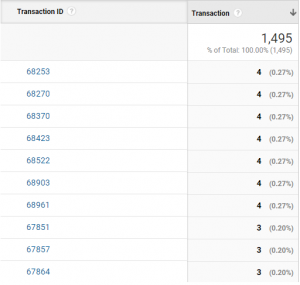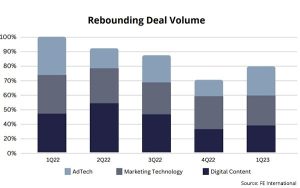
If you’re wondering whether you really need a special high risk merchant account, read on to find out why the answer to that question is a definite “Yes”, and learn what to look for when choosing the best payment processor for your high risk business.
At the start, you should know that the high risk payment processor is the one liable for any issues that may arise as a result of their clients’ increased transactional risks. And, being a high risk client, you should also be aware that the risk associated with running and maintaining your account will often be calculated differently. Unfortunately, this means that you’ll likely be offered a more expensive pricing model.
This is because high risk merchant accounts require that more complex payment processes be put in place (i.e. smart anti-fraud filters), and because these accounts are at a much greater risk of having to deal with an excessive amount of chargebacks, which are troublesome for everyone involved.
And, so, with the good, comes the pricey. High risk merchants are often able to generate an impressive income. But, with high revenue comes high chargeback, fraud, and money laundering risk. What does that mean for you? Yes, you guessed it. It means that you’ll be needing a merchant account tailored to your industry and business needs, which will help lower your chargeback rate and steer clear of fraudulent attacks. In all likelihood, a regular merchant account just wouldn’t be able to cater to your complex business model and unique risk points.
Once you finally find a reliable high risk credit card processor, you’ll see just how much this kind of payment solution will be able to streamline and safeguard your business.
So, what to look for when trying to choose the best high risk merchant account?
Table of Contents
- Comparing Merchant Account Rates, Fees & Costs
- High Risk Merchant Account Payouts & Reserves
- Why It’s Important to Have a Backup Merchant Account
- Other Types of Products & Services
Comparing Merchant Account Rates, Fees & Costs
Each processor has their own specific pricing models in place. As such, one of the most complicated aspects of understanding how your merchant account will work will likely be trying to accurately calculate how much you’re going to pay every time you process a transaction.
You can start trying to figure all this out by analyzing these common pricing models, as they’re used (in some form or another) by nearly all providers.
Flat-Rate Pricing
This pricing model’s key advantage is its predictability. If your chosen provider offers this scheme, you’ll be charged a fixed percentage and fixed per-transaction charge every time you process a payment.
The trouble with this model is that it can grow to be a bit pricey since the more you process per month, the more you’ll have to pay. Check with your provider whether they would be willing to adjust their rate once you reach a certain amount of processing volume.
Tiered Pricing
If a payment provider offers tiered pricing that means that they group the different interchange fees and categorize them according to how much risk is involved with regards to each transaction. The main trouble with this is that the payment processor is the one who gets to determine which transactions get placed in which tier — meaning that they might be more inclined to place a greater amount of transactions in the tier that would have them see greater income gains.
Here is how the three most common categories play out:
- Qualified Rate
This kind of transaction meets all of the provider’s processing requirements. An example of such a transaction would be when someone pays via a physical terminal using a standard credit card. Transactions of this type are classified as very low risk and will be processed at an appropriately low rate.
- Mid-Qualified Rate
Transactions that fall into this category don’t meet all of the payment processor’s requirements. Some examples include phone or direct mail order transactions, i.e. where the credit card isn’t being used in a physical sense. These kinds of transactions aren’t usually placed in the qualified tier because they’re associated with a high risk of fraud, which means that you’ll likely have to pay a higher rate.
- Non-Qualified Rate
This term is reserved for transactions, which don’t place in either the qualified or the mid-qualified tier. Examples of these kinds of transactions would be signature card transactions, e-commerce transactions, or reward card transactions. And, as you may have already guessed, they’re processed according to the highest fees.
Interchange-Plus Pricing
The most standard structure of an interchange-plus rate will be as follows: interchange + % + $ / transaction. This model will have you see considerable variability in terms of how much you pay per transaction but, on the upside, you’ll always know how big of a cut your payment processor is taking. This type of pricing model works best for merchants who process sums over 5,000 euro a month.
Subscription Pricing
This pricing model is a more recent variation of the interchange-plus scheme. Within it, once you pay a monthly subscription fee, you’ll be offered a fixed per-transaction charge, which you’ll have to pay along with the applicable interchange rate. The most common cost structure you might see could look like this: interchange + 0% + $ / transaction. This kind of pricing model tends to work best for high-volume merchants whose processing volume doesn’t often fluctuate.
Account Fees
Payment processors could also charge additional monthly, annual, or incidental fees. The fee you’ll likely see most often is the monthly one they charge for maintaining your merchant account. This sum is meant to pay for things such as account statements, customer service, and other unseen costs the provider has to bear to run your account.
Depending on your business model, you might also have to pay for making use of the provider’s payment gateway as well as for each transaction you process; (this is likely in the scenario that you choose to use a different gateway to than the one provided by your processor). However, some providers simply let you use their payment gateway for free. Check which option your processor offers.
Refund Fees
Talk to your payment processor and ask how they handle credit refund transactions. Being a high risk merchant who runs an online business, you’re bound to initiate more refunds than other types of businesses. And, as such, when you credit your customer, the largest portion of the processing fee — the interchange fee — is refunded back to the provider. What happens then varies greatly between processors.
Your provider could either: give the refunded interchange back to you (only charging a small fee to route the refund), keep the interchange and charge you with the transaction fee, or they could choose to keep the interchange and charge you with an additional processing and transaction fee for the refund.
Chargeback Fees
The chargeback fees you’ll have to bear are determined by the processor as well as the acquiring banks and are based on an assessment of the kind of goods or services you offer. As you might have expected, high risk merchants often have to pay much higher fees.
However, remember that chargebacks are preventable and, if correctly disputed, can be won. Look for a payment processor who is willing to help you install optimized anti-fraud filters which will help you reduce the amount of chargebacks filed against you — and who has special tools that can help you win more chargeback disputes, when they do occur.
PCI Compliance Fee
Payment processors can sometimes ask you to pay a PCI compliance fee. Be aware that this is a non-standard fee and what you get in return varies greatly between providers. Generally, in exchange for the fee, the best payment processors will offer their support and advice on how to remain compliant.
However, this isn’t the rule and processors don’t have to provide any value in exchange for this cost, as there aren’t currently any regulations in place which would make them do so. Look for a payment processor who plays fair and is willing to at least offer you some support in exchange for this fee.
Termination Fee
If you decide to terminate your merchant account contract before the end date specified in the agreement, you might be charged a so-called Early Termination Fee. This type of fee is calculated as the processor’s compensation for the expenses they’ll have to incur as a result of you terminating the contract.
The two most common termination fees you could encounter are either the flat cancellation fee or so-called liquidated damages.
- Flat Fee
This is exactly what you might expect: a pre-set amount of money you’ll have to pay if you cancel your merchant account before the agreed-upon date. Read your contract carefully, as it should make it clear which sum is the cancellation fee.
- Liquidated Damages
If your contract stipulates that you’ll be facing a liquidated damages type of cancellation fee, be aware that this could end up costing you quite a pretty penny. Imagine that you signed a 5-year contract with your payment processor but decide to cancel after just 1 year — in such a case, you’ll have to pay a cancellation fee equal to 4 years’ worth of processing costs. That’s a lot. And, so, if it comes down to it, it’s better to double-check which kind of cancellation fee your chosen provider will penalize you with.
High Risk Merchant Account Payouts & Reserves
Reserves
Merchant account reserves are similar to security deposits. A reserve is the amount of money that a merchant puts into an acquiring bank’s account in order to help protect the bank from potential, unexpected liabilities, in case something goes awry.
- Rolling Reserves
This is when a portion of each credit card deposit, (most likely about 5-10%), is held in a reserve for a period of 6 months to a year. These kinds of reserves are released on a continuous basis, and when the agreed upon timeframe is over, the acquirer releases the funds back to the merchant on a monthly basis. This is the most common reserves model offered to merchants.
- Up-Front Reserves
This kind of reserve is the amount of money that will have to be placed into escrow when you sign an agreement. The sum of the reserve will be determined based on your projected monthly processing volume.
- Capped Reserves
This type of reserve takes a percentage of each processed card transaction until a specified amount is reached. The amount you’ll have to pay will likely be about half of your monthly processing volume. Take note, however, that these funds will be held in the reserve until your merchant agreement is no longer valid; (they won’t be paid out on a monthly basis as is the case with rolling reserves).
Settlement Periods
The time it’ll take for you to receive money in your business bank account, (once your payment is authorized), varies greatly. This can take anywhere from 24 hours to 2 months. In essence, the settlement period is a bank’s way of safeguarding their business, as they aim to do everything they can to decrease the amount of chargebacks and fraudulent transactions they have to deal with.
However, if you have your own merchant account and run a business banks deem as being well-established, the settlement period typically takes about 3 working days. That’s why you should choose a payment processor who will show you the best ways to reduce your chargeback rate as well as how to successfully fight chargeback disputes. And, to help speed this process up even further, you could also try finding a payment processor who’ll guarantee that your payouts will take place on a daily or weekly basis.
Why It’s Important to Have a Backup Merchant Account
Being a high risk merchant, you most likely already know how important it is to have a backup merchant account to protect your business operations. And, if you don’t know why this is important, it’s best you take it from us, (instead of finding out the hard way).
If your business essentially runs on credit or debit card payments, you need a backup merchant account in case errors or other issues occur — which they will, and usually when you least expect it.
Banks can decide at random to stop offering online merchant services to certain high risk industries — based on industry type, unusually high processing volume, etc. When this happens, you don’t want to find yourself scrambling to find another means to process payments.
As such, the best thing you can do for your business is to have a couple of different merchant accounts and merchant IDs (MIDs) in place — hence, try to find a payment processor who will be able to provide these at the start, during your first set up.
Certain providers will offer to set up a backup merchant account and MID, but only once you run into trouble. This isn’t ideal, as then you won’t be able to avoid the resulting payment processing downtime.
If you’re still on the fence about this, keep in mind that you can take advantage of your backup high risk merchant accounts all the time, not just when issues arise. Many high risk merchants will even have 3 or more separate merchant accounts and MIDs, which they use on a daily basis.
For example, if your business generates a large amount of money each month, you could use your multiple merchant accounts to split up that amount and process it in smaller sums. Thanks to this, banks won’t be alarmed by your high processing volume and won’t feel the need to shut down your operations.
Having multiple merchant accounts and MIDs also helps to distribute your chargeback risk, which as you well know is particularly hefty for high risk industries. This way, if your chargeback rate exceeds e.g. 2% on one of your merchant accounts and the bank decides to close that account, you’ll still be able to use your other merchant accounts, (given that their chargeback rate is sufficiently low).
Other Types of Products & Services
When conducting a high risk merchant account comparison, there are a series of features and services you can look for to assess how well your chosen payment processor will be able to help you meet your objectives.
Analyzing your company’s needs and your industry’s specific operational implications will help you choose the best high risk merchant account for your business.
Below you’ll find a list of services offered by the most technologically-advanced and customer-focused payment processors out there.
Multiple Currencies & Languages
If you’re running a business which services customers from various global destinations, you should definitely look for a provider whose payment gateway and payment processes are available in a variety of different currencies and languages. If you choose a provider who doesn’t offer this type of service, you risk your international customers getting frustrated and abandoning their carts, which could lead to a higher involuntary churn rate.
Mixed & Custom Billing Models
Are recurring payments with prepaid credits part of your business? If so, look for a provider who would enable you to mix and match all of the pieces to best suit your needs. Find a payment platform that’s tailored to handle even the most non-standard business scenarios, so that you won’t have to limit your business opportunities. Some providers offer fully personalized pricing and subscription models and, as such, they’re able to handle any kind of business scenario you put in front of them.
24/7 Payment Success Rate Monitoring
It’s impossible to optimize something, if you can’t measure it. And, you won’t be able to measure it, if you can’t gather the data you need to do so. That’s why it’s important to look for a payment processor whose service offer includes transaction monitoring.
The best providers can even offer 24/7 monitoring of your payments’ success and failure rate, allowing you to learn how many of your payments are declined each day due to bugs and system inefficiencies. With this kind of knowledge, you’ll know exactly where the problem lies and how to fix it, helping you steer clear of easily avoidable transaction failures.
24/7 Chargeback Monitoring & Alerts
Even though there are some limitations to what chargeback monitoring and alerts can help with, it’s still a good idea to have access to this feature in order to alleviate the chargeback disadvantage as best as possible.
Round the clock chargeback monitoring can: improve your MID health, help you avoid chargeback fees, provide temporary relief from disputes, and lessen the impact that criminal fraud can have on your business. Since many processors don’t have this feature as a part of their service bundle, ask your chosen provider if they’re able to offer this.
AI Anti-Fraud Detection & Filters
Being a high risk merchant you know very well how overly sensitive anti-fraud filters can be — leading to falsely classified transactions. When you regularly see a high payments volume in short bouts of time, your business is at risk of being flagged for excessive fraudulent activity, and your customers are kept from being able to successfully check out.
Make sure to look for a payment processor who can install and optimize smart, AI-driven anti-fraud filters that will only flag transactions, which they can classify as fraudulent with 100% certainty. This kind of optimization will guarantee that all of your legitimate customers will be successfully let through the check out and you won’t have to worry about damages to your revenue stream.
Non-Invasive 3-D Secure
When running a high risk service, it’s important to pay close attention to security and authentication in order to protect your business from fraud. However, 3-step authorization mechanisms can be a real conversion-killer. When looking for the right payment processor for high risk merchants, see if you could find one that offers a more conversion-friendly version of 3-D Secure.
For instance, some providers offer more subtle, non-invasive versions of 3-D Secure, thanks to which the customer doesn’t have to deal with redirections or annoying pop-ups, (as the authentication is displayed as an overlay). This kind of authentication system will help you maintain a low chargeback rate, while helping to boost your conversion.
Chargeback Dispute Support
Unfortunately, it’s not possible to eliminate the occurrence of chargebacks entirely. And, in the high risk industry, this pesky problem is basically a given. That’s why, it’s best to look for a payment processor who understands your industry’s needs and will offer to not only help you reduce your chargeback rate, but will also be able to provide the right kind of tools, advice, and comprehensive support to help you successfully win more chargeback disputes. These kinds of tools could include such things as an automated dashboard representing process, special forms, or smart transaction monitoring.
Mobile & In-App Payments
An increasing amount of consumers are looking for the convenience of mobile payment solutions, which they would be able to rely on in terms of security and ease-of-use. This same need for advanced mobile capabilities applies to high risk services as well, so it’s important to provide your customers with a payment solution that’s equipped with a mobile-compatible and in-app checkout accustomed to every kind of device screen.
Acceptance & Authorization Rate Optimization
Certain payment processors can give you the opportunity to increase your transactions’ acceptance rates thanks to employing “failover”. This method can help if your provider makes it possible for you to cooperate with more than one acquiring bank. Cooperating with more than one bank means that if a transaction were to be declined, it could always be rerouted to another bank. In the long run, this kind of payment service feature will help to measurably boost your payment acceptance and authorization rates.
Additionally, try to find a provider who will help you reduce the number of declines you’re dealing with by optimizing submitted data and fraud protection filters, suggesting corrective changes to the issuer, and identifying a better routing for a given transaction.
Conversion-Boosting Payments
High risk customers are often amongst the most engaged and loyal out there. In return, they expect exceptional convenience and ease-of-use. And, so, the payment experience should live up to these same high standards. This means that, ideally, transactions shouldn’t take longer than 30 seconds to go through.
To be able to provide this to your customers, look for a payment processor whose checkout is well-optimized and which keeps the customer on the page, without distractions, third party redirections, or unintuitive payment forms.
1-Click Payments
Installing 1-click payments could really help keep your customers coming back for more, thereby, also boosting their customer lifetime value, (this is especially true for online games, entertainment, or social networks). The 1-click payments feature allows users to quickly and seamlessly conduct multiple transactions, without having to fill in their credit card data every time they’re about to make a transaction.
If you want a payment solution that really goes above and beyond, look for a provider who offers 1-click payments which cover customers’ sensitive data with tokenization technology for maximum transactional security.
Anti-Churn Services & Features
Involuntary churn can happen for a long list of reasons such as: customers not updating their card information or using expired cards, hard declines when a card is lost or stolen, soft declines when a credit card has been maxed out, etc. To avoid this, try to find a payment processor whose payment solution can prevent failed rebillings with Retry Logic.
For instance, if your rebillings fail due to “not enough funds” or maxed out limits, Retry Logic can help you save up to 15% more transactions from failing by making multiple charge attempts, which can be automatically retried at specific intervals. Additionally, see if your processor can install a smart payment card data updater which would be able to automatically update your customers’ payment card data and account information when they get flagged as incorrect or outdated.
24/7 Tech Support
Fraudulent or suspicious activity can freeze deposits, spikes in sales could max out monthly processing limits, and excessive chargebacks could shut down your merchant account — all of this can happen quickly and unexpectedly. That’s why the payment solution you end up choosing for your business should come with 24/7 technical support (and, ideally, a dedicated Account Manager).
Business & Finance Articles on Business 2 Community
(47)








